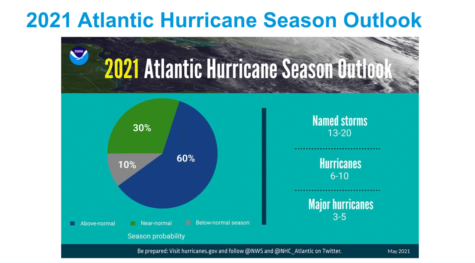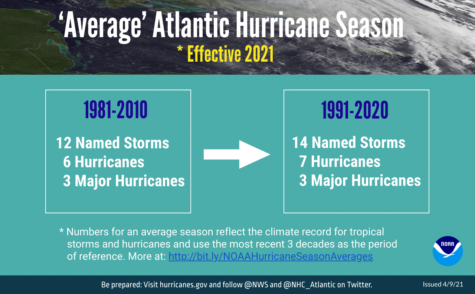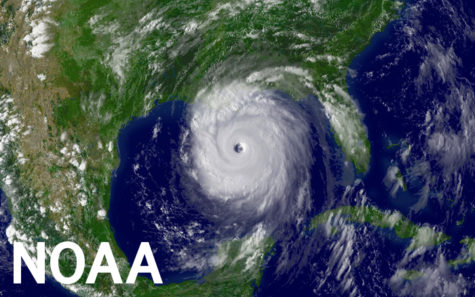For most in Florida, preparing for hurricane season is an annual tradition. In order to get ahead of the future heavy showers, Spinnaker attended The National Oceanic and Atmospheric Association (NOAA) media briefing on anticipated activity for 2021’s Atlantic hurricane season (June 1 – Nov. 30).
NOAA data predicts that “an above-normal season is most likely,” said Ben Friedman, deputy undersecretary for operations. In fact, there is a 60 percent possibility of an above-average hurricane season.

The graphic above also depicts a 30 percent chance of a near-normal season and a 10 percent chance of a below-normal season.
The NOAA media briefing began by diving into the importance of preparation, in which the Federal Emergency Management Agency (FEMA) stressed the significance of these many ideas when planning to ensure the safety of your family and property:
- Make an emergency hurricane plan. Make sure all members of the household know and understand the plan.
- Preparing individuals can prevent serious injury and even death.
- Preparing your home can mean the difference between minor damage and destruction.
- Review important documents. Make sure your personal documents, like your I.D., are up to date. Make copies, or digitals of important documents and keep them in a secure space.
- Check your insurance policies and see what coverage you have
- Keep in mind how the COVID-19 environment may affect your plans.
- Download the FEMA app from the App Store or Google Play Store to receive weather alerts and warnings for up to five different locations in the U.S.
- Know your hurricane risks. Find out how rain, wind, and water will affect your area.
- Know your evacuation zone. Learn your evacuation route, and identify where you are going to stay.
Preparation for the season’s storm is key, but the pre-season weather doesn’t look too busy according to local news.
New4JAX reports that there could be no pre-season tropical storms this year, for the first time in several years, and that “long-range forecast models look very quiet.”
15-days of ECMWF EPS (12z) ends May 2021, and my storm tracker is not picking up anything tropical in the Atlantic. That's good news. #TropicalUpdate 🌀 pic.twitter.com/o9slIUZhMB
— Ryan Maue (@RyanMaue) May 17, 2021
Atlanta meteorologist Ryan Maue says that his tracker didn’t pick up any tropical activity in the Atlantic, which is good news.
To predict a year’s season, the NOAA’s Climate Prediction Center (CPC) uses 1991-2020 “as the new 30-year period of record,” according to the NOAA.
Updated averages for the Atlantic hurricane season have increased with 14 named storms and 7 hurricanes. The average for major hurricanes (Category 3, 4, or 5) remains unchanged at 3, said the NOAA in an April report.
They say that the increase in the averages may be attributed to the overall improvement of observing platforms, “including NOAA’s fleet of next-generation environmental satellites and continued hurricane reconnaissance,” said the NOAA in the report. “It may also be due to the warming ocean and atmosphere which are influenced by climate change.”

The NOAA updates the statistics used to determine when hurricane seasons are above-average, near-average, or below-average compared to the climate record. The update occurs every ten years.
“This update allows our meteorologists to make forecasts for the hurricane season with the most relevant climate statistics taken into consideration,” said Michael Farrar, director of NOAA’s National Centers for Environmental Prediction. “Our work illustrates the value of NOAA’s investments in next-generation technologies to capture the data that underpins our outlooks and other forecast products. These products are essential to providing the public and local emergency managers with advance information to prepare for storms, and achieving NOAA’s mission of protecting life and property.”
In the outlook, FEMA also said that after last year’s record-setting hurricane season, in the middle of a global pandemic, they are more prepared than ever for the threats that may come along this year. “Due to the adoption of more ritual operations, and inspections, and no-contact service methods; our response has evolved to ensure that we keep the safety of individuals we serve at the forefront of our minds throughout their times of greatest need.”
FEMA has updated its take on virtual town halls as well as coordinated messaging to survivors from FEMA officials and local community leaders. They are also improving communication efforts for individuals with disabilities and limited English efficiency during response and recovery endeavors.

Well, it seems this summer is probably going to be an above-normal display of weather. The hurricane season has not officially begun, but as Florida is a peninsula, it’s one of the most vulnerable states for hurricanes, so it’s important to take precautions and establish a well-thought plan in case a fierce storm is headed your way.
For more helpful hurricane preparation tips, visit ready.gov/hurricanes.
_____
For more information or news tips, or if you see an error in this story or have any compliments or concerns, contact editor@unfspinnaker.com.
















